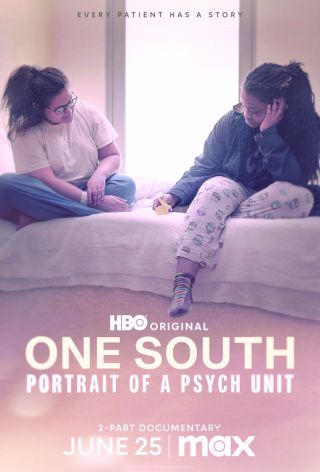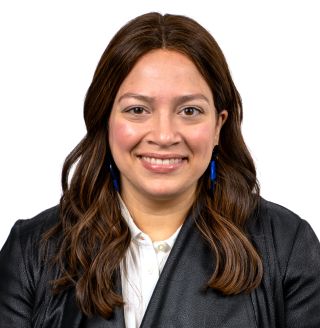Therapy
It’s All DBT, All the Time on “One South,” the HBO Documentary
A conversation about DBT with one of the stars of “One South,” Dr. Rachel Reich.
Posted July 11, 2024 Reviewed by Michelle Quirk
Key points
- Dr. Rachel Reich shares how she used DBT skills to manage the stress of doing therapy in front of a camera.
- The DBT skill opposite action involves changing your behavior—and your internal narrative about yourself.
- Willingness is about doing things differently even when it's uncomfortable or challenging.
A prominent dialectical behavior therapy (DBT) therapist, Dr. Rachel Reich recently gained widespread recognition for her role in the new HBO documentary "One South: Portrait of a Psych Unit.” The documentary is all DBT, all the time. The two-part series spends 10 days in an inpatient psychiatric unit in New York, where the clinicians and staff help college students with severe mental illness.
Hailed as the "sleeper star" of the documentary, Reich connects deeply with clients, teaching them DBT skills and helping them emerge from acute bouts of suicidality. I had the pleasure of chatting with her recently. Here are the highlights from our conversation.

A Conversation With Rachel Reich
"Rachel, it's such a pleasure to connect with you," I greeted her, still in awe of her impactful work on the show. "Your portrayal of DBT techniques was incredibly authentic and thorough."
"Thank you so much," Rachel responded warmly. "Your words mean a lot to me. It was truly a collaborative effort."
What Is Dialectical Behavior Therapy?
Rachel explains DBT as a comprehensive therapy designed to help individuals develop skills for managing overwhelming emotions and improving relationships. “It helps people to make critical changes, such as changing ineffective thoughts and behaviors, while simultaneously teaching them how to truly accept themselves and their realities,” she begins. “It’s particularly effective for people who struggle with intense emotions, unstable relationships, and impulsive behaviors."
Balancing Privacy and Passion
I was intrigued by Reich's minimal online presence, which struck me as unusual in today's social media-driven world. "You seem quite private. Is that intentional?"
"Yes, it is." Reich acknowledged her hesitation toward social media, citing concerns over its impact, particularly on younger generations. "There's this dialectic," she explained. "I'm passionate about DBT and spreading its principles, but social media doesn't always align with my values of privacy and authenticity."

Navigating the Camera and Compassion
I asked Reich what it was like to conduct therapy sessions in front of a camera. She explained, "Remember, I was sitting across from patients who were also mic'd up. Their courage in staying present and vulnerable in the session made it a lot easier for me."
Reich shared about how much she values DBT skills in her own life and explained that she used DBT skills to handle the stresses of being on camera. She shared that opposite action, belly breathing, and mindfulness made all the difference.
Opposite Action
Reich elaborated, "One of the core skills in DBT is opposite action. It involves doing the opposite of what your emotions tell you to do when those actions are ineffective or not aligned with your goals. For example, suppose someone is feeling depressed, which often comes with urges to isolate. In that case, opposite action might involve reaching out to a friend or engaging in an activity they used to enjoy.”
She emphasized that opposite action is not denying or suppressing emotions but learning to respond effectively despite them. "It's about recognizing that although our emotions always come from a valid place, they don’t always align with what's best for us in the long run."
Reich continued, "People associate opposite action with: I felt like staying in bed today. Instead, I got out of bed and went to the grocery store.
"But opposite action isn't just about changing external behaviors. It's also about challenging the internal narratives we give ourselves. I had to practice opposite action for my shame and fear of of judgment from other people.
"I worried: What if I look stupid? What if I make a mistake? What if I feel weird or awkward? These thoughts brought up urges to hide or avoid.
"Opposite Action was putting myself out there. I'm in this documentary because it aligns with my values. Acting on fear isn't effective for me. So, I focused on staying present, focusing on my body and five senses. Not getting in my head about what the footage will look like later."
Belly Breathing and Mindfulness
Rachel discussed the importance of mindfulness techniques like belly breathing in DBT. "Mindfulness helps individuals stay present in the moment without judgment," she explains. "Belly breathing, specifically, is a technique where you focus on breathing deeply into your belly rather than shallow chest breathing. It activates the body's relaxation response, easing stress and intense emotions."
"When we feel anxious, or on the verge of panic, our breathing becomes shallow, centered in our chest and shoulders. It feels like we can't take a deep breath.
"We can shift that by doing a manual override and focusing on expanding our bellies when breathing in. Imagine that we're filling up a balloon as we inhale, pushing our bellies out and expanding them so that the air can fill our lungs fully. Then, we can feel like we're getting a deep breath. Then we release slowly, and the body relaxes."
Willingness
When I asked Reich about her favorite DBT skill, she replied, "In DBT, willingness means being open and actively engaging with the therapeutic process, with reality exactly as it is," she clarified. "It's about doing things differently when the old way isn’t working, even when it's uncomfortable or challenging. Willingness allows individuals to move towards their values and goals, despite the obstacles."
Reich explained that when she teaches willingness, she first explores willfulness. "Willfulness can look like having a tantrum when things aren't the way you want them to be. You might have an external tantrum, ranting and raving over text. Or being really irritable and snapping at the people we live with. Or even target behaviors like punching walls or thinking about suicide or self-harm. Other people have internal tantrums, such as not responding to people and leaving them on read. Or not going to class or some other form of avoidance or shut-down. The first step is recognizing willfulness and being willing to label it."
Final Thoughts
Reich emphasized that DBT is not a quick fix but a journey of growth and self-discovery. "It requires dedication and persistence," she added, "but the rewards in terms of emotional freedom and improved relationships are profound. It is a beautiful thing to help people learn how to experience their emotions fully and feel confident that they can respond to them effectively."
Reich expressed optimism about the future of DBT. "There's so much potential to integrate these skills into everyday life," she remarked. "My hope is that more people will embrace DBT not just as therapy but as a toolkit for personal growth."
References
Reich, Dr. Rachel, personal communication, July 5, 2024.
One South: Portrait of a Psych Unit is currently streaming on MAX. The documentary about Northwell’s Zucker Hillside Hospital’s innovative college program was produced by HBO and Gidalia Pictures. You can find out more about Dr. Reich’s work at RachelReichPhD.com.




